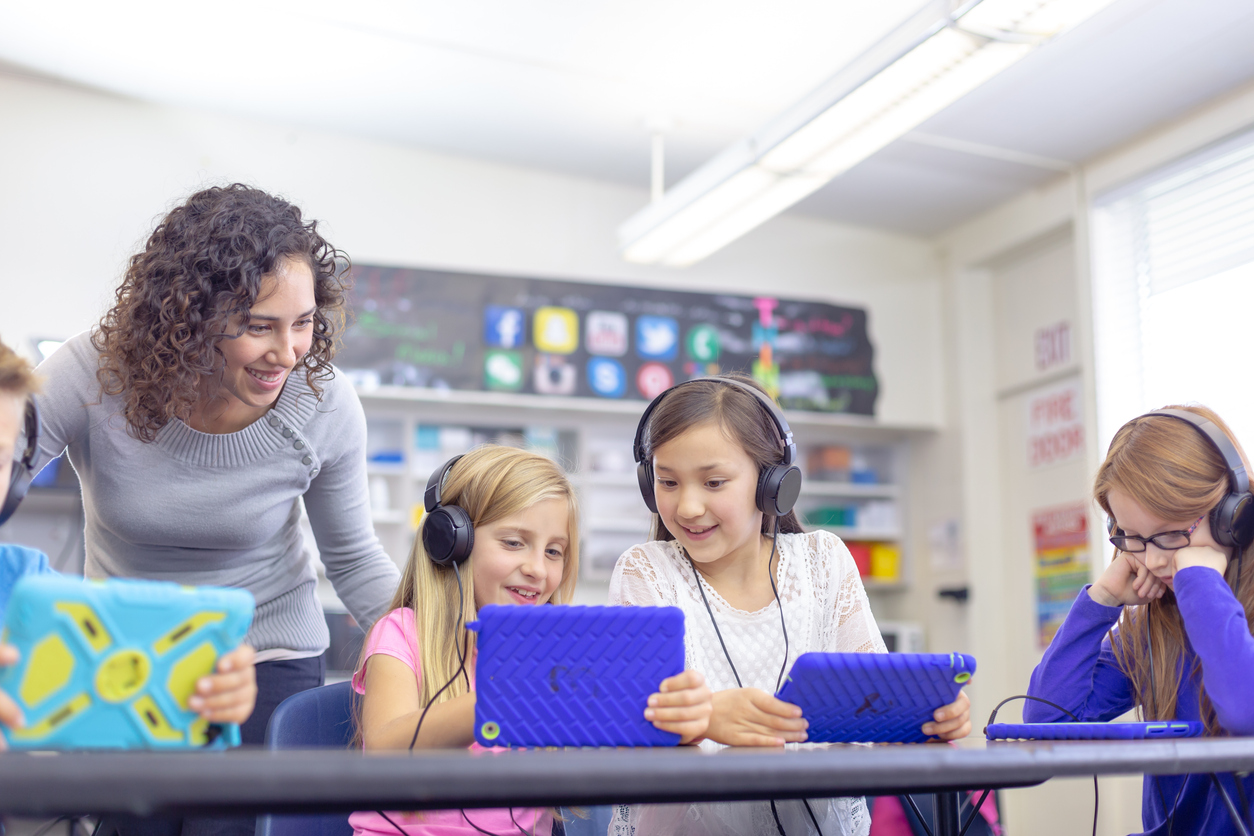Enroll in Primary Science Tuition Singapore for a Strong Science Foundation
Enroll in Primary Science Tuition Singapore for a Strong Science Foundation
Blog Article
A Comprehensive Overview to the Different Discovering Methods in Primary Scientific Research Direction
The exploration of diverse discovering techniques in primary scientific research guideline provides an opportunity for instructors to improve pupil involvement and comprehension considerably. By examining hands-on understanding methods, inquiry-based methods, and joint methods, we can recognize reliable practices that deal with different finding out styles. Additionally, the combination of modern technology and separated instruction plays a crucial duty in fostering a comprehensive environment. The concern continues to be: how can these techniques be effectively executed in the class to optimize their impact? The response exists in a more detailed assessment of each strategy and its implications for teaching scientific research.

Hands-On Understanding Methods
Hands-on knowing techniques play a critical function in primary scientific research direction, involving trainees in energetic exploration and trial and error. These methods allow learners to communicate directly with sensations and materials, cultivating a much deeper understanding of clinical ideas. By utilizing manipulatives, designs, and real-life experiments, instructors produce an environment where students can observe, assume, and test their ideas.
Such strategies not only enhance comprehension but also grow crucial thinking and problem-solving skills. When pupils join activities like building simple machines, planting seeds, or conducting chemical responses, they are urged to ask inquiries and seek answers through their own observations. This experiential strategy helps to demystify intricate clinical concepts, making them a lot more accessible and relatable.
Additionally, hands-on learning promotes collaboration among peers, as pupils frequently operate in groups to conduct experiments or share findings. This team effort not just enhances their learning experience yet likewise creates necessary social skills. Inevitably, integrating hands-on strategies in main scientific research direction fosters a lifelong love of learning and interest concerning the natural globe, laying a strong structure for future academic quests in scientific research and beyond.
Inquiry-Based Discovering
Inquiry-based learning is a training approach that motivates trainees to ask inquiries, examine sensations, and construct their own understanding of clinical principles. This method changes the focus from traditional teacher-led direction to a much more student-centered experience, where students take the campaign in their instructional trip. By cultivating curiosity, inquiry-based discovering advertises much deeper interaction with the product, permitting students to check out subjects in a purposeful context.
In practice, this method commonly entails hands-on experiments, monitorings, and crucial thinking activities that line up carefully with the clinical technique. Pupils are urged to create theories, layout examinations, and evaluate information, which grows crucial abilities such as logical and analytic thinking. The duty of the instructor in this framework is to help with exploration, guiding students via the questions procedure while urging independent idea and partnership.
In addition, inquiry-based understanding supports a feeling of ownership over the learning procedure, encouraging trainees to go after knowledge actively. This method not only boosts understanding of clinical concepts but additionally promotes a lifelong love for learning, gearing up students with the abilities needed to navigate an increasingly complex globe.
Collaborative Knowing Approaches
Collaborative understanding approaches equip pupils to take part in significant communications with peers, cultivating a shared obligation for their instructional results. In key scientific research instruction, these methods urge students to work together to check out clinical principles, fix issues, and perform experiments (primary science tuition Singapore). By participating in group activities, trainees can utilize varied perspectives, enabling richer understanding and retention of scientific understanding
One secret element of collective discovering is the focus on interaction abilities. Pupils have to express their ideas, listen proactively to others, and bargain ideas, every one of which are important proficiencies in both academic and real-world contexts. This social interaction not just enhances their understanding of scientific concepts but likewise advertises teamwork and conflict resolution skills.
Furthermore, collaborative discovering commonly brings about boosted motivation and engagement. When trainees see the value of their contributions within a group, they are most likely to take possession of their knowing journey. Educators can facilitate this procedure deliberately organized group tasks that straighten with curriculum objectives while supplying assistance on effective cooperation techniques. In general, incorporating collective learning strategies in main science direction cultivates a dynamic learning atmosphere that prepares students for future scholastic and social challenges.
Technology Combination in Scientific Research
The integration of innovation in key scientific research instruction improves finding out experiences by providing ingenious devices and sources that support various mentor methods, consisting of collaborative learning - primary science tuition Singapore. Making use of electronic systems, simulations, and interactive applications allows students to engage deeply with scientific ideas, facilitating a more hands-on method to discovering
Online research laboratories, as an example, make it possible for students to perform experiments securely and successfully, advertising inquiry-based understanding. These devices can imitate real-world clinical circumstances, enabling trainees to picture complicated processes that would be challenging to replicate in a conventional classroom setting. Furthermore, technology fosters communication and cooperation amongst trainees, as they can share findings and collaborate you can check here on tasks with on the internet platforms.
Additionally, multimedia discussions and academic videos can improve lessons by dealing with diverse understanding styles, making abstract concepts a lot more available. Data evaluation tools also equip students to accumulate and translate clinical data, enhancing essential believing abilities. Overall, the calculated incorporation visit this web-site of modern technology in main scientific research instruction not just enhances interaction yet likewise prepares pupils for a technically innovative society, furnishing them with essential abilities for future clinical endeavors.
Set Apart Instruction Techniques
Differentiated direction approaches are important for attending to the varied needs of learners in key scientific research education. These strategies allow educators to customize their mentor techniques to fit differing capacities, interests, and discovering designs within the class. By utilizing differentiated instruction, instructors can produce a comprehensive setting that fosters engagement and enhances understanding of clinical ideas.
One effective strategy is to make use of flexible grouping, which permits students to collaborate with peers at comparable skill degrees or with varying point of views. This technique urges peer understanding and advertises essential reasoning. In addition, using options in tasks can equip trainees, allowing them to select tasks that reverberate with their passions while still satisfying curricular objectives.
Additionally, integrating tiered tasks is one more valuable technique. Deliberately jobs with varying levels of intricacy, educators can guarantee that all students are suitably tested, despite their proficiency. Making use of formative assessments to determine comprehending further makes it possible for educators to change their instructional approaches dynamically, making sure that each learner obtains the assistance they need.
Inevitably, executing differentiated instruction strategies in main science education and learning not only improves student discovering outcomes however also grows a passion for scientific research, preparing students for future scholastic pursuits.

Conclusion
In summary, efficient main scientific research guideline necessitates a multifaceted method that includes hands-on discovering, inquiry-based approaches, and joint strategies. The integration of technology and distinguished direction even more caters to diverse knowing styles, promoting an atmosphere conducive to exploration and crucial thinking.
The exploration of varied understanding approaches in key scientific research direction provides a chance for educators to enhance pupil interaction and comprehension home considerably.Hands-on knowing techniques play a pivotal duty in key scientific research instruction, engaging pupils in energetic exploration and trial and error.Inquiry-based discovering is a training method that urges pupils to ask concerns, investigate sensations, and build their own understanding of clinical ideas.Joint discovering methods empower pupils to involve in meaningful interactions with peers, promoting a common obligation for their educational end results. Generally, incorporating collective knowing strategies in key science guideline cultivates a vibrant knowing setting that prepares students for future scholastic and social challenges.
Report this page